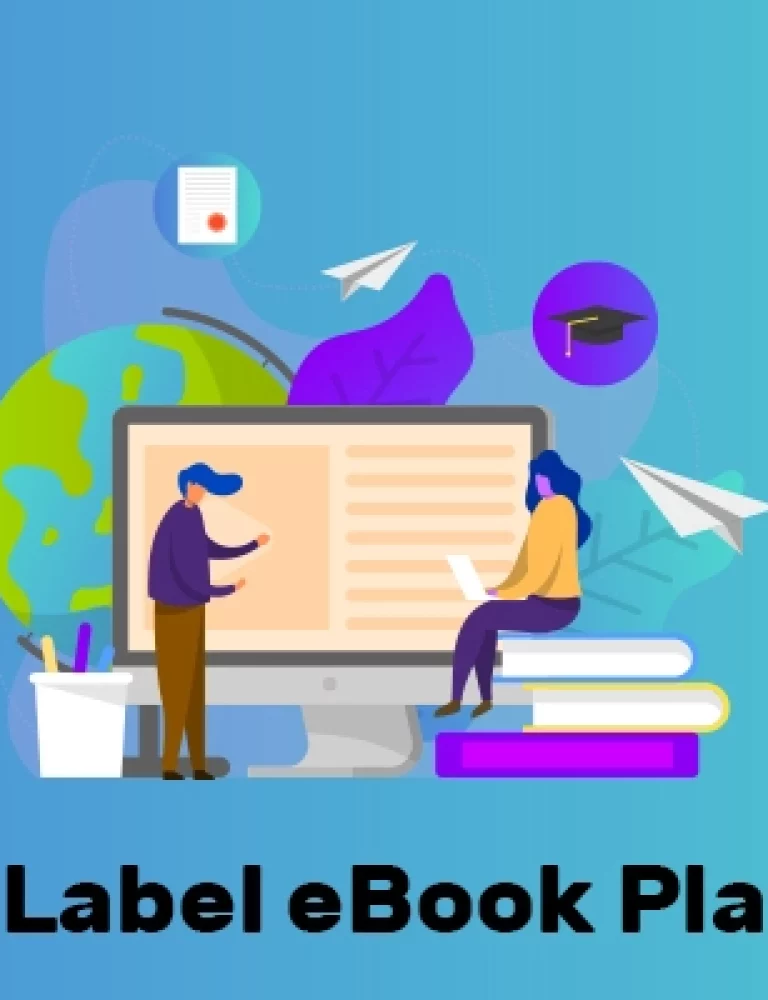In recent years, there has been a noticeable shift towards multimedia-driven education. Traditional classroom lectures are giving way to a preference for videos as the primary medium for expediting comprehension, knowledge retention, and skill enhancement among learners.
Technology plays an important role in creating and delivering videos as training material. Automation and cloud-based solutions have become integral components of modern educational content creation.
A prime example is the transformative impact of digital textbook platforms like KITABOO, which facilitate the seamless integration of video content into eBooks and digital learning programs.
Table of Contents:
I. Video Training Content: A Brief
II. Top Benefits of Video Training Content in 2024
III. 8 Tips to Create & Deliver Video Training Content
- Keep It Short
- Maintain Flexible Usage of Videos
- Introduce Gamification
- Feature Familiar Faces
- Experiment With Video Formats
- Include Captions
- Create Summary-Style Videos
- Have a Data-Driven Video Strategy in Place
IV. Takeaway
Video Training Content: A Brief
Video training content refers to educational material presented in the form of short videos to enhance learning effectiveness in the training context.
Here are some relevant video-watching statistics that demonstrate this shift:
- The average weekly time spent watching videos grew from 10.5 hours in 2018 to 17 hours in 2023.
- In the third quarter of 2023, tutorials or how-to videos ranked fourth in video categories, with a 25.7% share, followed by educational videos at 25.6 %. This statistic demonstrates that video is emerging as a go-to format for learning.
- The number of viewers watching digital videos grew from 2.78 billion in 2029 to 3.48 billion in 2023.
The adoption of digital textbook platforms like KITABOO enables businesses to track how learners are engaging with video content via AI-powered data analytics. Its in-depth analytics help them shape their content and business strategy, optimizing the learning experience and improving overall efficiency.
Top Benefits of Video Training Content in 2024
Video training content can boost learning effectiveness in several ways, as follows:
1. Higher Retention
A majority of learners tend to retain concepts faster after watching a video as opposed to traditional methods such as classroom-style lectures and static learning material. The storytelling and visual aspects of video draw the learner in and break down complex concepts in a matter of seconds and minutes, thus enabling superior retention.
2. Learning Flexibility
Today, a collection of videos can be made accessible to learners as per their needs. Access to videos on demand enables learners to watch at their discretion, thus nudging them towards self-learning. They can watch videos any number of times until they feel confident about the subject.
3. Accessibility of Videos
Videos can be made accessible to learners with a wide range of challenges. Audio and subtitles can be accessible in multiple languages, thus reducing language barriers. Captions enable learners with hearing challenges to understand the videos.
4. Higher Engagement
Videos receive higher engagement than static content. For instance, videos on social media are shared 1200% more than text and image content. This is why video is now being used in areas such as marketing and learning.
8 Tips to Create & Deliver Video Training Content
Keep these guidelines in mind when incorporating video as an element in your training programs.
1. Keep It Short
The optimal length for a video is between two and 5 minutes. However, with social media videos getting as short as seven seconds, it is crucial to capture your audience’s attention quickly. Ensure that your video content is concise, focused, and delivers the key points efficiently to maximize engagement in the long run.
2. Maintain Flexible Usage of Videos
Though a short video can be used for self-learning, it can also be used in diverse contexts, such as during seminars, coaching sessions, and group learning sessions. Hence, the quality of videos should be made with multiple contexts in mind.
3. Introduce Gamification
Incorporating gamification elements into your video training content can significantly enhance learner engagement and motivation. It not only comes in handy in terms of keeping learners interested but also provides a dynamic and interactive learning experience.
4. Feature Familiar Faces
Featuring a familiar face, such as a CEO, team member, expert, or coach, can add more excitement to the training material. They can play the role of narrators or experts, and this approach can incentivize team members to watch the videos and retain information faster.
5. Experiment With Video Formats
Bringing diversity to video formats can keep the look and feel fresh. For instance, videos can be presented as animation, 3D models, a question-and-answer format, or a story.
Augmented Reality videos, for instance, are gaining popularity, as they create an immersive experience. On the other hand, traditional lecture-style videos can still be effective for certain types of content.
6. Include Captions
Make sure that your video has captions in a language that is relevant to your audience. Videos with captions especially help native language speakers and those with hearing challenges learn faster.
7. Create Summary-Style Videos
While longer videos explain concepts clearly, it’s a smart idea to include summary videos that sum up learning in a matter of seconds. These types of summary-style videos are effective for reinforcing key takeaways and facilitating quick reviews.
8. Have a Data-Driven Video Strategy in Place
Trainers must leverage the power of data to better understand the engagement rate and learning effectiveness of their teams. This helps them make informed decisions and continuously improve the video training strategy.
Digital textbook platforms like KITABOO enable trainers to create, publish, and distribute content seamlessly while providing a range of features to enhance the overall training experience.
Takeaway
The adaptability and seamless integration of video training content into learning environments position it as an essential choice for effective education.
Early investments by businesses in crafting top-tier, dynamic video-based training material can yield a workforce that is not only highly skilled but also competitive and relevant in the face of market volatility.
Today, corporate and business training teams can team up with leading digital textbook platforms like KITABOO to make high-quality, interactive training eBooks for global teams. With top-notch DRM solutions and cutting-edge technology, this platform ensures that the training content remains secure and accessible only to authorized users.
Connect with us for further information!
Discover How An Ebook Conversion, Publishing & Distribution Platform Can Help You
Kitaboo is a cloud-based content platform to create-publish & securely distribute interactive mobile-ready ebooks.
You May Also Like
-
The Rise of eBooks: Why Books are Declining?
Blog,Digital Publishing,eBook solution / January 17, 2024









